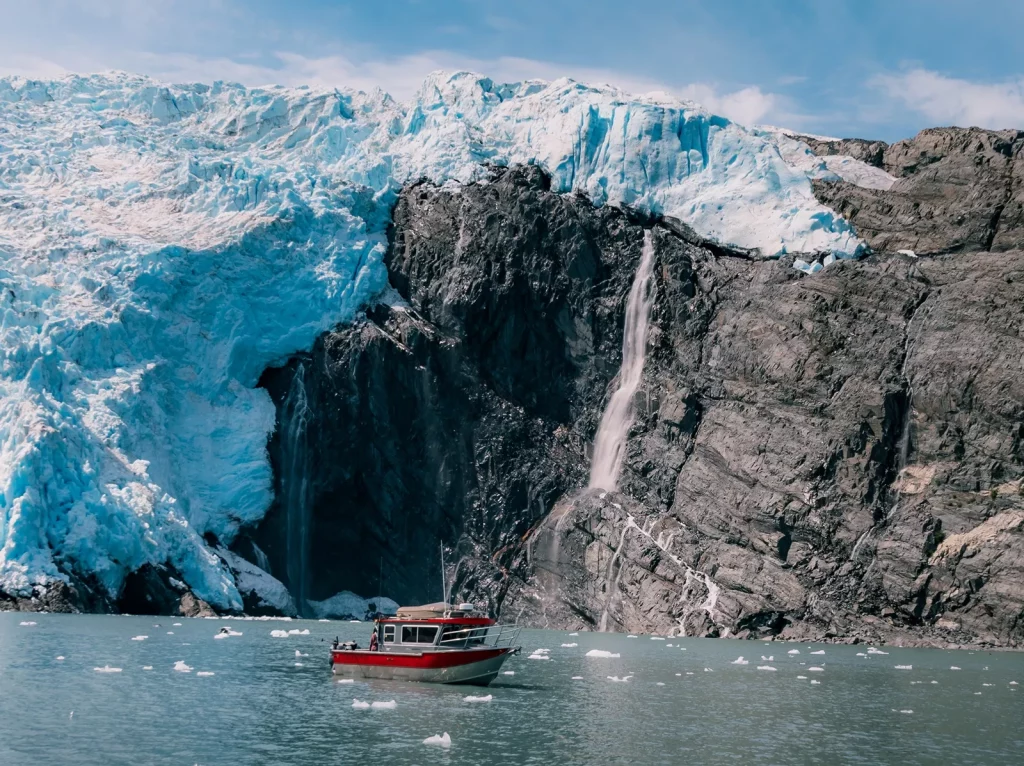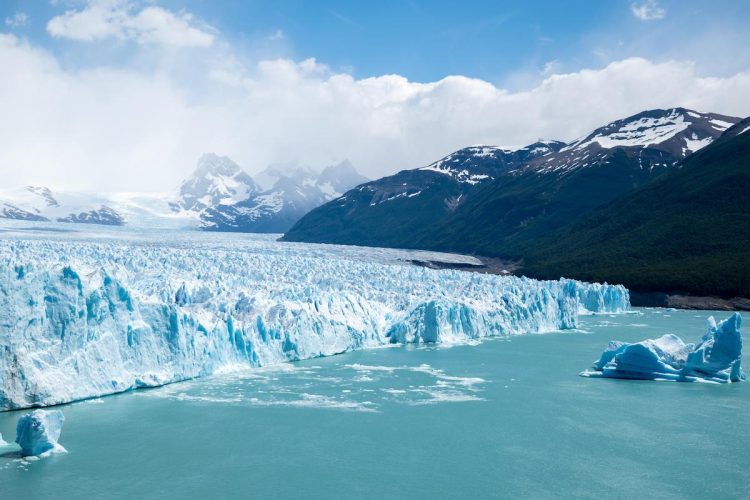Alaska’s glaciers are some of the most awe-inspiring natural wonders on the planet. Stretching across vast, pristine landscapes, these frozen rivers of ice offer a dramatic testament to the power and beauty of nature. Whether you are seeking to hike on a glacier, embark on a boat tour, or simply soak in the beauty from a distance, Alaska’s glaciers offer an unparalleled experience for nature enthusiasts, photographers, and adventure seekers alike. As glacier tourism continues to grow in popularity, it’s essential to know how to make the most of your glacier adventure in 2024—while respecting and preserving these magnificent landscapes for future generations.
In this guide, we’ll provide everything you need to know to ensure a safe, enjoyable, and sustainable glacier experience in Alaska, including expert tips on preparation, gear, the best glacier locations, and how to navigate the stunning, yet delicate, environment.
1. Why are Alaska’s Glaciers Becoming More Popular in 2024?
Alaska has long been a bucket-list destination for outdoor adventurers, and glaciers are one of the key draws for those seeking to experience the raw, untouched beauty of the Last Frontier. With increasing interest in eco-tourism and unique wilderness experiences, glaciers are becoming an increasingly popular attraction for visitors in 2024.
One of the key reasons for the growing popularity of glacier tourism is the accessibility of these natural wonders. Advances in guided tours, technology, and travel infrastructure have made it easier than ever to access some of Alaska’s most impressive glaciers. From accessible boat tours that bring you up close to massive ice walls, to glacier hiking and ice climbing adventures, travelers are flocking to Alaska to experience these frozen landscapes firsthand.
However, as tourism to Alaska’s glaciers increases, so does the need for responsible, sustainable practices. Visitors are encouraged to engage in eco-tourism, ensuring that the glaciers remain intact for future generations to enjoy. Whether you’re hiking in Denali National Park or cruising through Glacier Bay, understanding the unique challenges and sensitivities of this environment is crucial to making the most of your glacier adventure.
2. Practical Tips: Packing, Gear, and Physical Preparation for Glacier Hikes
Exploring Alaska’s glaciers can be an exhilarating experience, but it requires careful preparation. The weather in Alaska can be unpredictable, and glacier terrain can be challenging. To fully enjoy your glacier adventure, here are some practical tips on what to pack and how to prepare physically.
Packing Essentials:
- Layered Clothing: Alaska’s weather is notorious for changing rapidly, so it’s crucial to dress in layers. A moisture-wicking base layer, insulating middle layer (like fleece), and a waterproof, windproof outer layer will ensure you stay comfortable in cold, wet, or windy conditions.
- Sturdy Footwear: Glacier hiking involves a mix of rocky terrain, ice, and snow. Invest in durable hiking boots that provide ankle support and good traction. Waterproof boots are recommended to keep your feet dry in wet conditions.
- Crampons or Microspikes: If you plan on walking directly on a glacier, you’ll need specialized footwear. Crampons (spiked shoes) are often provided on guided tours to help you grip the ice. If you’re hiking on icy trails before reaching the glacier, microspikes will offer the traction you need.
- Waterproof Backpack: Carry a small, waterproof backpack to keep your gear dry. Don’t forget to pack a water bottle (the water from the glacier is often clean and drinkable), snacks, and any camera gear for capturing the stunning landscapes.
- Sunglasses and Sunscreen: Even though glaciers are cold, the sun’s reflection off the ice can be intense. Protect your eyes with UV-blocking sunglasses and apply sunscreen regularly.
Physical Preparation:
Glacier hiking is physically demanding. It often involves strenuous activity like climbing, navigating uneven terrain, and sometimes ice trekking. To prepare, consider the following:
- Cardiovascular Training: Hiking on glaciers can be tiring, especially if you’re carrying a heavy pack. Incorporate aerobic activities like hiking, cycling, or swimming into your routine to build stamina.
- Strength Training: Strengthen your legs and core with exercises like squats, lunges, and planks. These exercises will help you navigate rough terrain with more ease.
- Balance and Stability: Glacier terrain can be slippery and uneven. Practice exercises that enhance your balance, like yoga or balance board exercises, to improve your stability.
- Acclimatization: If you’re planning to visit high-altitude glaciers, take time to acclimatize to the altitude. Symptoms of altitude sickness can range from headaches to dizziness, and adjusting to the environment gradually can help prevent discomfort.
3. Best Glacier Locations in Alaska: Glacier Bay, Kenai Fjords, and Wrangell-St. Elias National Park
Alaska is home to hundreds of glaciers, each offering its own unique experience. However, some destinations stand out as particularly accessible, scenic, and rewarding. Below are three of the best glacier locations to explore in Alaska in 2024:
Glacier Bay National Park:
Located in the southeastern part of Alaska, Glacier Bay National Park is a UNESCO World Heritage Site known for its incredible glacial landscapes. The park is home to several active glaciers, including the massive Margerie Glacier. Visitors can enjoy glacier cruises, where you can sail through pristine waters and see towering walls of ice calving into the sea.
Aside from glaciers, Glacier Bay is also rich in wildlife. You can spot seals, sea otters, orcas, and humpback whales. Whether you take a guided boat tour, hike along the shorelines, or explore on a kayak, Glacier Bay offers something for every kind of traveler.

Kenai Fjords National Park:
Kenai Fjords is another must-see destination for glacier adventurers. The park is located on the Kenai Peninsula, just a few hours from Anchorage, and it boasts some of the most spectacular glaciers in Alaska, including Exit Glacier. Accessible by both land and sea, this park offers visitors the chance to hike directly on glaciers, explore ice caves, or take a cruise along the stunning fjords to see glaciers calving into the ocean.
For a truly immersive experience, consider booking a kayaking tour in the fjords, where you can paddle alongside glaciers and observe wildlife in its natural habitat.
Wrangell-St. Elias National Park:
The largest national park in the U.S., Wrangell-St. Elias is a wilderness paradise for glacier enthusiasts. This park is home to over 30 glaciers, including the Bagley Icefield, one of the largest icefields in North America. Wrangell-St. Elias offers a variety of ways to experience glaciers, including helicopter tours that provide sweeping views of this vast, remote landscape.
For more adventurous visitors, glacier trekking and ice climbing are popular activities in this park. Due to the park’s remote nature, it’s recommended to travel with a guide who is experienced in navigating the glaciers safely.
4. How to Travel Sustainably and Respect the Fragile Glacier Environment
Glaciers are fragile ecosystems that are increasingly threatened by climate change. As a traveler, it’s important to minimize your environmental footprint and respect the natural environment. Here are some tips for traveling sustainably during your glacier adventure:
- Leave No Trace: Always pack out everything you bring with you. Avoid leaving any trash behind, and try to leave natural objects in their original locations.
- Respect Wildlife: Alaska’s glaciers are home to diverse wildlife. Keep a safe distance from animals, avoid feeding them, and respect their natural habitats.
- Choose Eco-friendly Tours: Select tour operators who prioritize sustainability, minimize waste, and offer eco-friendly equipment. Look for certifications such as Leave No Trace or Green Seal when choosing your glacier tour.
- Reduce Carbon Emissions: Opt for small-group tours or carpool with other travelers to reduce the number of vehicles on the road. Consider taking a train or bus to Alaska instead of flying, if possible.
5. Safety Guidelines for Exploring Glaciers and Remote Landscapes
Safety is paramount when exploring Alaska’s glaciers. These landscapes are often isolated and can be unpredictable. Here are some essential safety tips:
- Never Explore Alone: Glacier terrain can be treacherous, especially for those unfamiliar with it. Always travel with an experienced guide, especially if you’re venturing onto the glacier itself.
- Stay on Marked Trails: Glaciers are constantly shifting, and crevasses can form unexpectedly. Always stick to marked trails or areas that are clearly designated for visitors.
- Be Prepared for Emergency Situations: Know the basic first-aid procedures and carry a first-aid kit. In case of an emergency, keep a charged phone, satellite phone, or emergency beacon with you.
- Check Weather Conditions: Weather can change rapidly in Alaska, especially in the mountains and on glaciers. Always check weather reports before heading out, and be prepared to turn back if conditions worsen.
Conclusion
Alaska’s glaciers are one of the world’s most breathtaking natural wonders, offering unforgettable experiences for those seeking adventure and serenity. By following the tips above, you can make the most of your glacier adventure in 2024 while ensuring that these stunning landscapes are preserved for future generations to enjoy. Whether you’re embarking on a glacier hike in Wrangell-St. Elias or exploring the fjords of Kenai, the experience of standing on a glacier surrounded by towering peaks and icy blue waters is one that will stay with you forever.





















